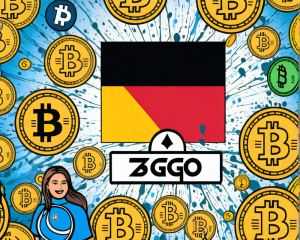The Halloween of Cryptocurrencies
October 31, 2008, is not only known for pumpkins and costumes; it marks the day when a mysterious figure known as Satoshi Nakamoto published the Bitcoin white paper to a niche group of cryptography enthusiasts. Talk about a spooky revelation! This unexpected twist in digital currency introduced a system built on the principles of decentralization and peer-to-peer transactions, setting the stage for a financial revolution.
Unveiling the White Paper
Satoshi opened with a bold claim: “I’ve been working on a new electronic cash system that’s fully peer-to-peer, with no trusted third party.” By using nodes to validate transactions through a proof-of-work mechanism, this white paper addressed the notorious issue of ‘double spending’ in digital currency. And folks, they launched just two months later on January 3, 2009—faster than most people can decide what costume to wear!
The Legacy of Early Innovators
The Bitcoin revolution didn’t emerge from nowhere. It cannibalized ideas from various brilliant minds who laid the groundwork. For instance, Wei Dai’s B-money was a key reference in Satoshi’s work. B-money envisioned a peer-to-peer cash system that, much like Bitcoin, involved maintaining account balances with transactional broadcasts. Satoshi also looked to Adam Back’s Hashcash, invented in 1997, which primarily targeted spam emails—Bitcoin’s ancestors were, in essence, fighting their own digital wars long before satoshis were minted.
Key Contributions
- Hal Finney: Reusable Proof of Work
- David Chaum: DigiCash
- Nick Szabo: BitGold
- Phil Zimmermann: PGP
Building the Blockchain
Now let’s talk timestamps! Satoshi’s implementation of timestamp servers ensured that each block of transactions was time-stamped and hashed—think unique IDs for every transaction. This feature not only solidified the integrity of the blockchain but also tackled the double spending monster head-on, making Bitcoin essentially tamper-proof. Satoshi also made use of Merkle trees to validate the transaction data, proving once again that he wasn’t just playing with his digital Lego blocks.
Bitcoin’s Bumpy Road: From Pizzas to Legal Tender
It may be hard to believe, but the world’s first real-world purchase using Bitcoin was made in May 2010 when Laszlo Hanyecz bought two pizzas for 10,000 BTC. Fast forward a decade and we have countries like El Salvador embracing Bitcoin as legal tender—hey, one person’s pizza night is another’s economic revolution!
The Future is Bright and Bitcoiny
As of late, Bitcoin’s ride has been wilder than a soap opera plot twist, swinging from pennies to nearly $69,000 in its history. Today, it hovers around $34,350, which means that if you’d bought those two pizzas back in 2010 without selling, you’d probably need a very, very big pizza oven to cook those beauties today. Moreover, advancements like the Lightning Network and Bitcoin ETFs promise to keep the momentum going and maybe even stabilize this rollercoaster ride. In the end, as Satoshi Nakamoto illustrated 15 years ago, the future of finance may just run on the spooky energy of pure code.















+ There are no comments
Add yours